
The Order of St. Patrick is the most prestigious Irish distinction
The Most Illustrious Order of Saint Patrick is the youngest of the three highest national honors in the United Kingdom. This regalia rewarded the aristocrats of Ireland for their loyalty to the crown. Its counterparts are the Order of the Garter in England and the Order of the Thistle in Scotland. The main insignia is an eight-pointed star with a trefoil in the center. Each of its three leaves bears a crown, and behind them is a red cross. The trefoil is surrounded by the motto of the Order of Saint Patrick, "Quis separabit?". The recipients also wore a breast badge with the same design, which was attached to a golden chain of the order.
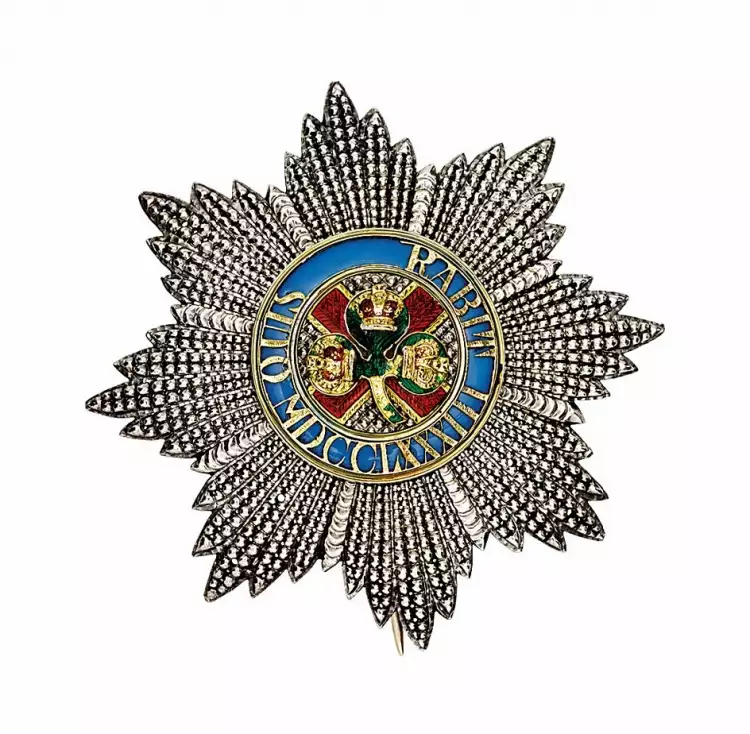 The Order of St. Patrick. Star of the Order of Saint Patrick
The Order of St. Patrick. Star of the Order of Saint Patrick
Key characteristics of the Order of Saint Patrick:
- Artist: Unknown.
- Country: United Kingdom.
- Establishment Date: 1783.
- Number of Grades: 1.
- Star Size: 77 mm x 75 mm.
- Badge Size: 100 mm x 32 mm.
- Star Material: Gold, silver, enamel, and in special cases: diamonds, emeralds, rubies.
- Badge Material: Gold, enamel.
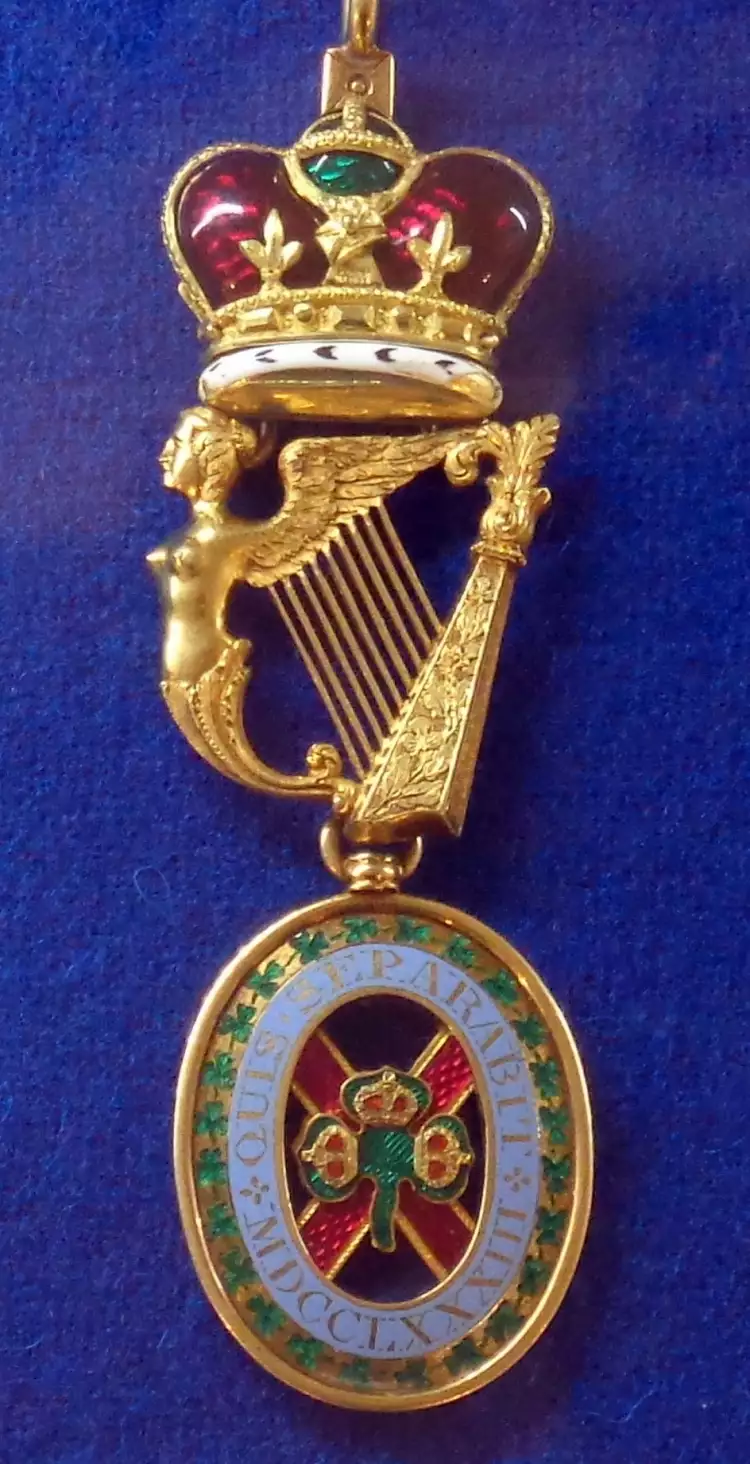 The Order of St. Patrick. Badge of the Order of Saint Patrick attached to a necklace
The Order of St. Patrick. Badge of the Order of Saint Patrick attached to a necklace
The History of the Order of St. Patrick
The Order of St. Patrick was established by the initiative of George III to enhance the authority of the crown among the Irish nobility. The history of this award began in 1783 when it was named in honor of the famous saint. According to legends, he was born in the west of Britain and was kidnapped by pirates at a young age. He remained in captivity for some time and tended to herds in Ireland. Eventually, he managed to return to his homeland and became a preacher. As a bishop, he returned to the "Emerald Isle" and converted many ordinary people to the faith. He explained the concept of the Holy Trinity using the example of a clover leaf, which became its symbol. The day of this saint is an important Irish holiday, and it is not coincidental that the motto was taken from the Holy Scriptures. The concise Latin quote translates to: "Who shall separate us from the love of Christ?"
The Order of St. Patrick was awarded for over 130 years until the Irish struggle for independence intensified in 1919. Even after the signing of a peace treaty, only three members of the royal family received the award. Since 1936, the order has been considered "dormant" but has not been officially abolished. The last knight lived until 1974, and it was Prince Henry, Duke of Gloucester. During World War II, Winston Churchill and in the 1960s, Prime Minister of Ireland Seán Lemass attempted to revive the regalia, but Parliament opposed it as the government did not want to complicate British-Irish relations.
The title of the Grand Master of the Order belongs to the monarch, currently Elizabeth II. In the past, the one who initiated the recipient into knighthood would be adorned with precious regalia. They included a badge and star encrusted with large diamonds, emeralds, and rubies, as well as a luxurious necklace. These jewelry pieces were created in 1836 and were stored in the safe of Dublin Castle alongside other treasures. Due to their immense value, they were known as the "Crown Jewels of Ireland." In 1907, before the arrival of the King, they were stolen. The best detectives from Scotland Yard tried to locate the regalia, but their efforts were in vain. The mystery of this theft remains unsolved.
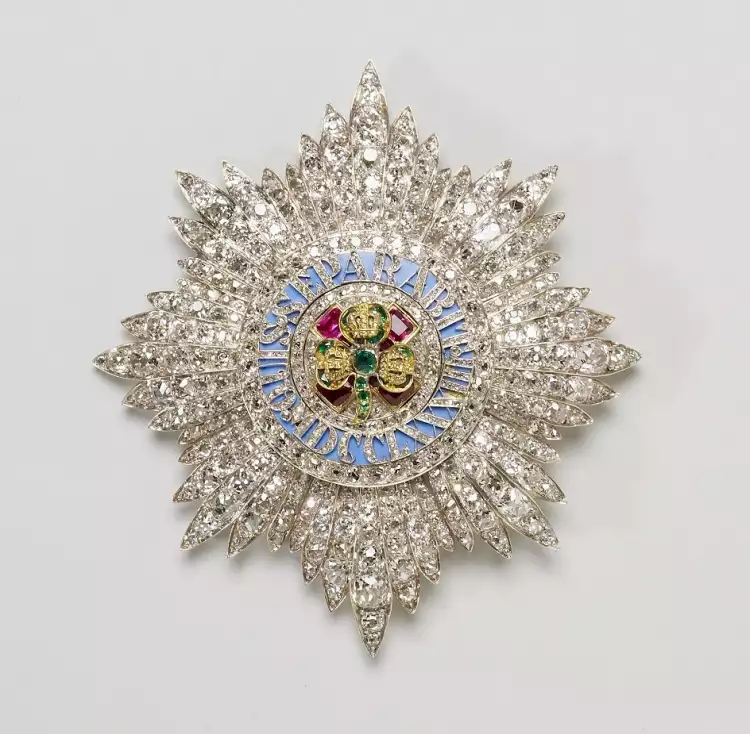 The Order of St. Patrick. Star of the Order from the Royal Collection Trust
The Order of St. Patrick. Star of the Order from the Royal Collection Trust
Whom the Order of Saint Patrick was awarded to
The award was intended for the highest nobility of Ireland - the gentry of the third generation, exclusively men. Only Queen Victoria and Elizabeth II, as sovereigns, received it among women. The recipients were usually Irish parliament peers and princes. The regalia did not grant them additional privileges but was considered honorary. Initially, apart from the monarch, the order consisted of 15 knights. William IV increased their number to 22.
At the most solemn events - coronations and initiation ceremonies - the knights were supposed to wear special garments and ornaments:
- A blue mantle with white lining and a hood. The star was attached to it on the left side.
- Headgear initially made of white satin and later of black velvet. It was adorned with three colored feathers: red, white, and blue.
- A luxurious gold chain with the heraldic emblem of the Tudors and a harp crown on top. A breast badge was attached to it.
- A sky-blue ribbon worn across the shoulder. In less formal occasions, the badge was attached to its end instead of the chain.
The Order of Saint Patrick is a rare distinction. Objects related to it are kept in museums in Dublin and Northern Ireland, as well as in collections in the United Kingdom and some European countries. Occasionally, the star, chain, or parts of the attire are exhibited at Christie's and other auctions. Currently, the star and motto of the order serve as distinguishing symbols of the Irish Guard.
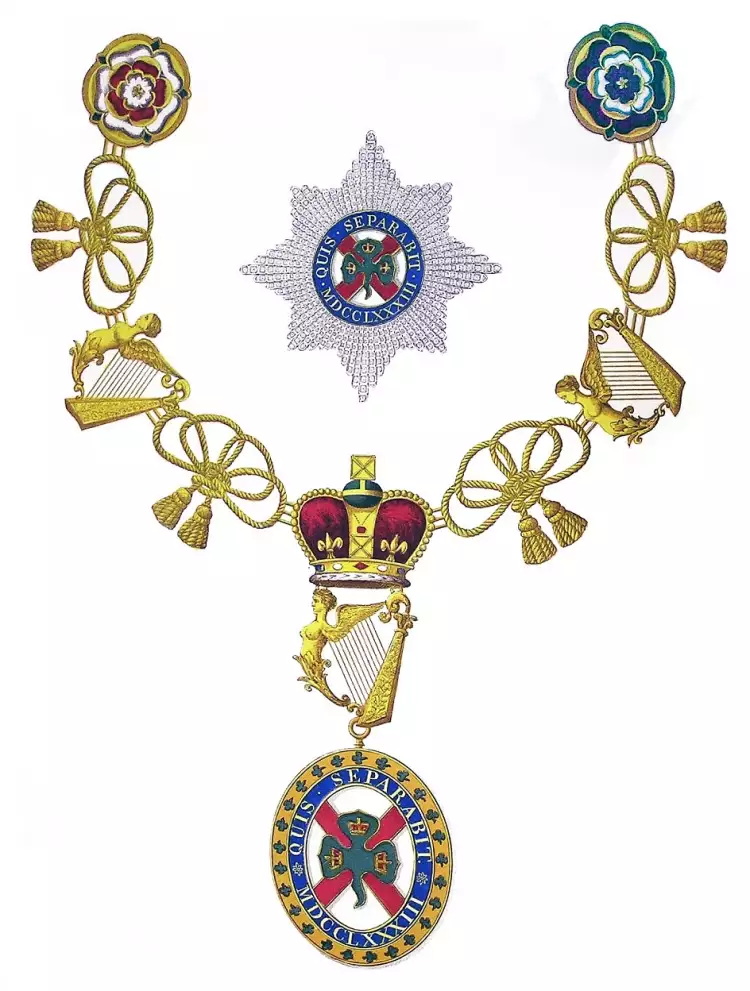 The Order of St. Patrick. Drawing of the insignia on the chain and star of the Order
The Order of St. Patrick. Drawing of the insignia on the chain and star of the Order
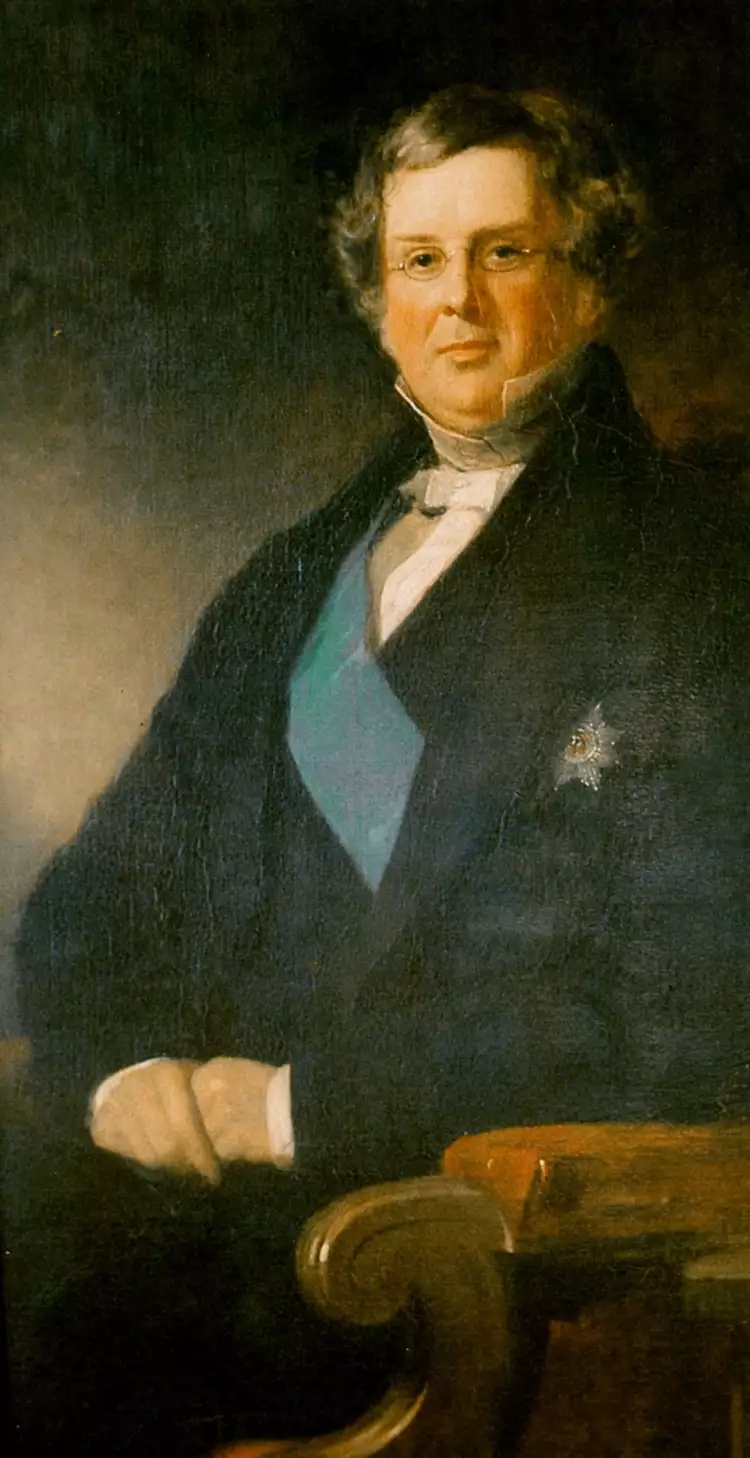
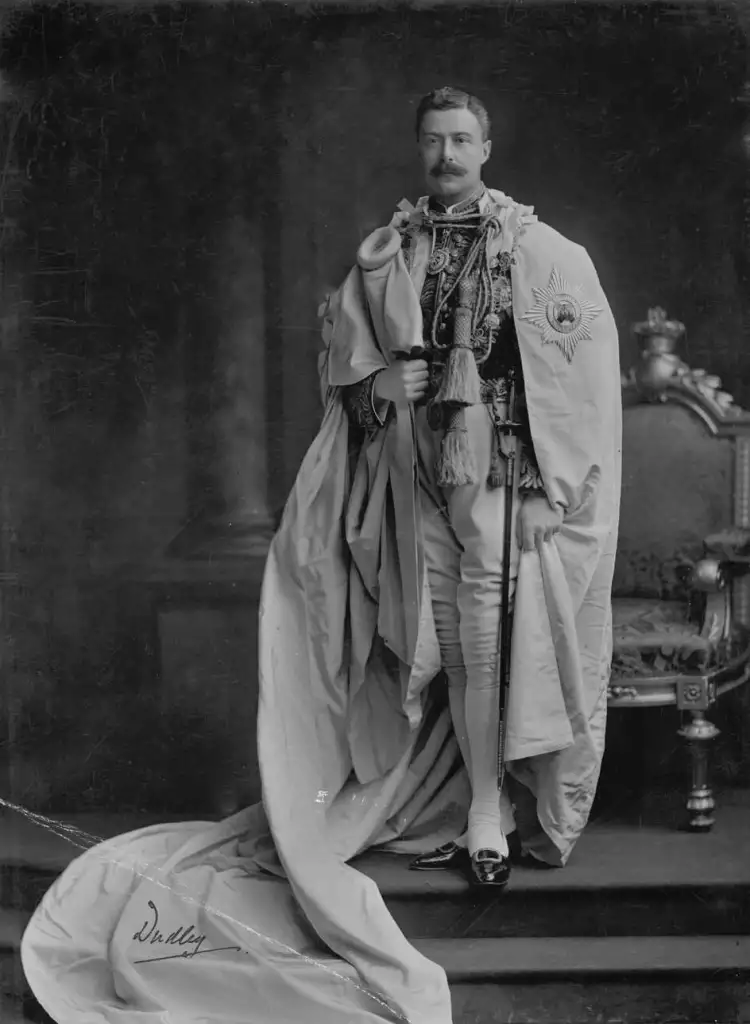
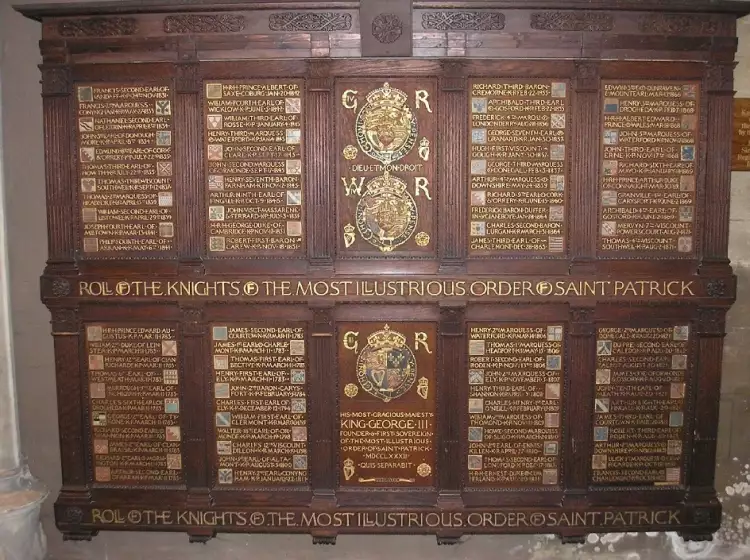
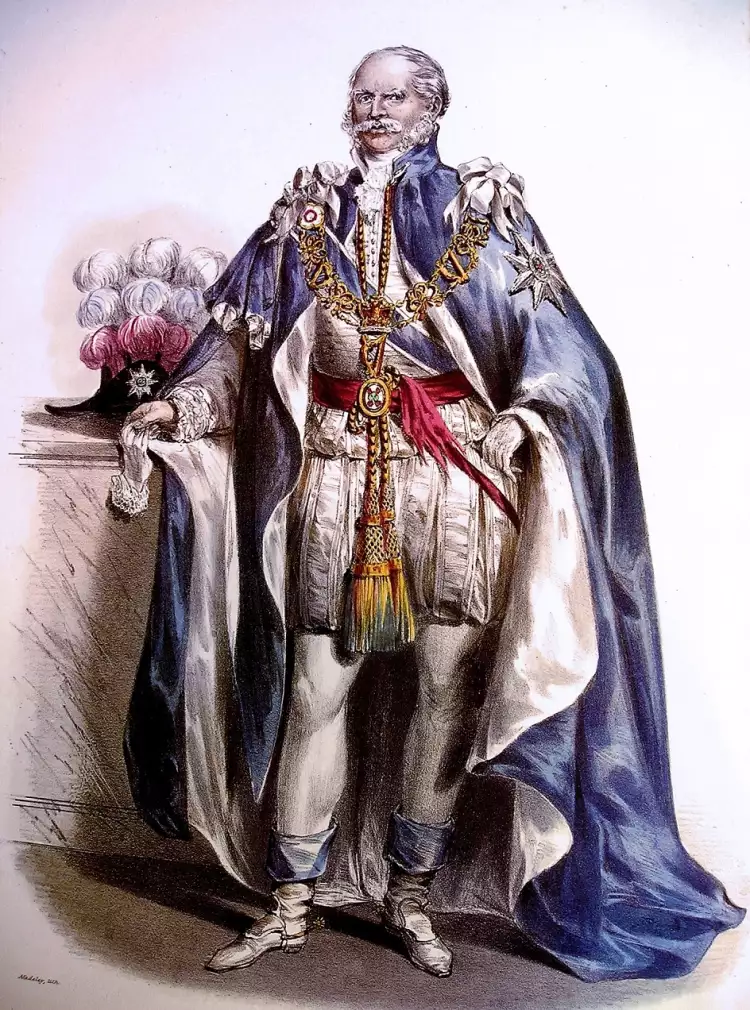
 Battle genre in painting: heroic battles and anti-war pathos
Battle genre in painting: heroic battles and anti-war pathos 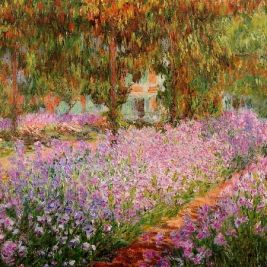 Impressionism in painting, or The Catchers of the Beautiful Moment
Impressionism in painting, or The Catchers of the Beautiful Moment 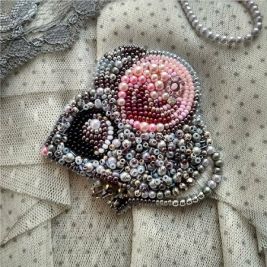 Application is a technique of decorative and applied art: essence, types, history
Application is a technique of decorative and applied art: essence, types, history 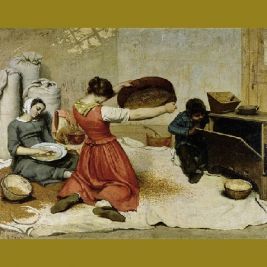 Realism - the art of portraying life in all its manifestations truthfully
Realism - the art of portraying life in all its manifestations truthfully 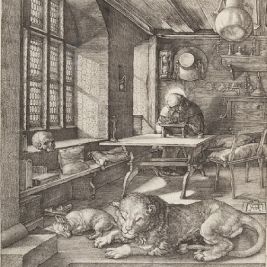 Engraving is a captivating art of creating printed images
Engraving is a captivating art of creating printed images 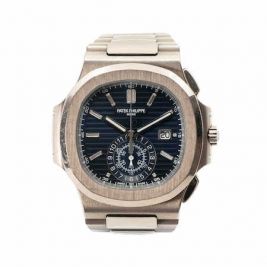 Wettmann Onlineauctionen: A Portal to Rare Antiques and Luxurious Treasures
Wettmann Onlineauctionen: A Portal to Rare Antiques and Luxurious Treasures 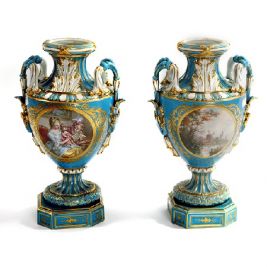 French Porcelain: History of Development and Top Manufactories
French Porcelain: History of Development and Top Manufactories 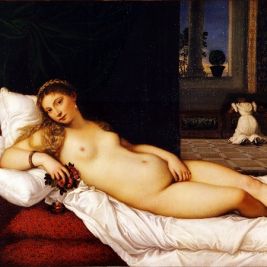 Genre of Nude in Painting: Evolution and Historical Trends of the Nude Style
Genre of Nude in Painting: Evolution and Historical Trends of the Nude Style  Top 10 Most Famous Architects - The Greatest Master Builders in Human History
Top 10 Most Famous Architects - The Greatest Master Builders in Human History  Ceramics as Fine Art: The Evolution from Craft to High Culture
Ceramics as Fine Art: The Evolution from Craft to High Culture